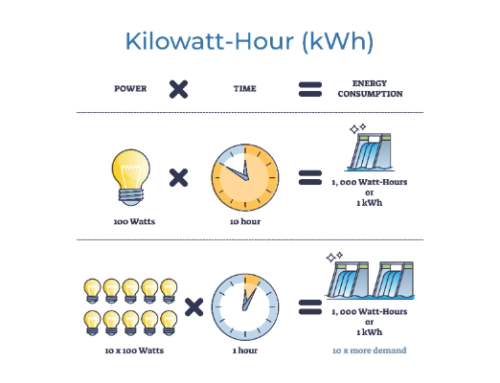
As a California homeowner considering solar energy, you might be wondering about the roles of solar (panels) and batteries in your upcoming solar system purchase. With recent changes in the state’s energy landscape, batteries have become an essential component of a residential solar setup. Proper battery sizing is crucial for ensuring your system’s financial viability and performance. In this post, we’ll guide you through the process of accurately sizing a home solar battery.
The Importance of Batteries in California Solar Systems
In California, the economics of solar systems heavily rely on batteries. Without a properly sized battery, your solar investment might not make financial sense. Batteries allow you to store excess energy produced during the day (by the solar panels) for use during peak hours or when the sun isn’t shining. This increases the value of the energy produced by your solar system and lowers your utility bill cost substantially.
Steps to Properly Size Your Home Solar Battery
1. Obtain Accurate Electricity Consumption Data
The first step in sizing your solar system battery is to provide your solar installer with precise information about your electricity consumption. In PG&E territory, this data is called “Green Button Data” and can be easily downloaded from your online PG&E bill pay portal. Accurate consumption data is essential for your solar company to generate a design that meets your needs (number of solar panels to install). This avoids wasting time and potentially your money on an incorrectly sized system.
2. Discuss Future Electricity Demand
Have a detailed conversation with your solar company about any expected increases in your electricity demand. Are you planning to purchase an electric vehicle? Will you be installing a pool or hot tub? Have you considered a heat pump to get away from expensive natural gas or propane? These factors significantly impact your energy needs, and your solar company must be aware of them to design a system that meets your existing needs and future requirements. Failing to account for increased demand can result in a system that underperforms, leading to a poor customer experience and a negative online outlook that is oh, so common.

Example of solar estimation tool consumption curve.
3. Input Consumption Data into Estimation Software
Your solar company will input your consumption data (Green Button preferably) and future needs into a sophisticated estimation software tool. This software generates a highly detailed and accurate consumption profile, which serves as the baseline for designing your solar and battery system.

Example of solar estimation tool results graph.
4. Analyze the Results
Let’s consider an example: Mr. and Mrs. Jones consume 12,000 kWh per year and plan on adding an EV that is driven 10,000 miles per year. Due to shading concerns, increased demand, and panel orientation, the software determines they need 13 kW DC of solar panels (PV). But what about the battery? This is where the data you provided in steps 1 and 2 comes into play.
5. Apply Industry-Accepted Battery Sizing Practices
There are two main approaches to battery sizing:
- Manufacturer Recommendations: Some battery manufacturers, like Tesla (Powerwall 3) and Enphase (IQ5P), recommend sizing the battery at 2x the system size DC. In our example, this would mean 13 kW DC x 2 = 26 kWh of battery storage. Tesla Powerwall 3 batteries come in increments of 13.5kWh and Enphase IQ5P batteries come in increments of 5kWh. So, you would need two Powerwall 3 batteries or five Enphase IQ 5P batteries to cover your needs. Both are excellent options.
- Seasoned Designer Approach: Experienced solar designers often recommend sizing the battery at 2/3rds of your daily consumption. From our example above and factoring in the consumption of the EV, total electricity demand is 15,000 kWh per year or 41kWh per day. 2/3 of 41kWh is 27kWh needed in battery storage capacity. Like above, two Tesla Powerwall 3’s or five Enphase IQ5P batteries would be needed. This analytical approach ensures that the solar panels cover the home’s usage during the day, while the batteries cover the consumption during the evening and early morning. This approach also tests the Green Button data more heavily and better captures the lifestyle under the roof that the batteries are working to support.
In sum, both approaches generate a similar result. However, it is always best to test Green Button Data. More on how to get your PG&E Green Button Data to your solar company in a later blog post.

Example of 3 Tesla Powerwall’s installed. Total storage capacity 40.5kWh powering entire home.
The Importance of Collaboration
Ultimately, both the customer and the solar company play crucial roles in determining the proper number of solar panels and battery size. As a potential customer, sharing accurate consumption data and future energy needs is essential for a well-designed and properly functioning solar and battery system. Solar contractors, in turn, must ask the right questions and use industry best practices to size the battery accurately. If one of both of these are not occurring, problems will likely arise down the road.
If you’re interested in learning more about solar with batteries and how they can help you save money, consider reaching out to a reputable solar company like Sunriver Solar. With a commitment to truth, transparency, and kilowatt-hours, they can help you navigate the process of going solar with confidence and at a fair price.
Schedule a battery consultation here: https://www.sunriversolar.com/contact/
Check out some of our work here:https://www.instagram.com/sunriversolar/
THINK LOCAL AND SAVE
Phone
Working hours
| Monday | 7 AM–4:30 PM |
| Tuesday | 7 AM–4:30 PM |
| Wednesday | 7 AM–4:30 PM |
| Thursday | 7 AM–4:30 PM |
| Friday | 7 AM–4:30 PM |
| Saturday | Closed |
| Sunday | Closed |







